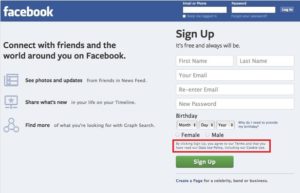So, you have your Terms and Conditions (T&C, a.k.a., Terms of Use) posted on your website and you have a separate T&C for your products and services… check and check! (Yes, you need them both!
WEBSITE T&C PROTE CTS YOU
CTS YOU
The law is designed to protect the consumer.
Your job is to protect yourself and your business.
The purpose of your website T&C statement is to create a contract (legal agreement) between you and your website visitors whereby you list your terms (the rules) for allowing someone to use the free content on your site. This is intended to reduce your risk of liability (should someone try to take you to court) AND add an extra layer of protection when it comes to your Intellectual Property rights, i.e., the legal rights you have to exclusive use of the content you create and own.
PRODUCTS and SERVICES T&C
Similarly, your products and services T&C is designed to reduce your risk of liability and protect your ownership of the content included in the product. However, there’s a difference between free content you provide on your website and the content you provide in your products and services: the stakes are higher and you want to be sure you’re protected should someone decide to sue you. That’s why it’s so important to include a T&C with your products AND make sure people actually see those terms before they buy.
You have two options here, with one offering more protection to you than the other.
BROWSE-WRAP OR CLICK-WRAP… IT’S ALL SHRINK-WRAP!
There are two methods of providing a T&C for your visitors, as well as clients or customers and they both involve “shrink wrapping” the terms of the agreement within the content, whether it’s a website or a digital product or service.
The first type is the browse-wrap, which is what you typically see when a Terms and Conditions statement is “wrapped up” on a separate page of a website, and “shrunk” into a link that appears in the footer section of the site. This link should be conspicuously located in order to give visitors notice of the terms. The browse-wrap agreement doesn’t offer the same level of protection, however, as the click-wrap agreement.
CLICK-WRAP AGREEMENT
A click-wrap agreement requires the user/buyer to take an extra step in order to confirm that the company’s terms have been agreed upon.
Checkbox Method: The business will require a user to check or toggle the famous “I agree” checkbox in order to create an account, order a product, continue towards a new section of the website etc. Here’s an example you’ll find on Facebook, highlighted by the red box in the image, below:
“By clicking Sign Up, you agree to our Terms and that you have read our Data Use Policy, including our Cookie Use.”

Notice Method: With the Notice Method a business gives the consumer notice that there are terms and conditions and that by taking a certain action the consumer affirms that he or she agrees to the terms.
For example: “By clicking the “Buy Now” button you acknowledge that you have read this website’s Terms and Conditions agreement, located HERE.”
As you can see, the Click-Wrap method provides increased notice to the consumer that the T&C not only exists but that one must affirmatively act to indicate that he or she agrees to the terms as outlined in the agreement.
Here’s to covering your assets online.
Don’t have a Terms and Conditions agreement? That’s not good, my fellow online business owner! Let’s get you protected. You can either have it DFY (Done-For-You, click HERE) or DIY (Do-It-Yourself, click HERE) . Either way, you’ve got to get it done if you don’t want to leave yourself, your business, and your personal assets exposed to liability.
